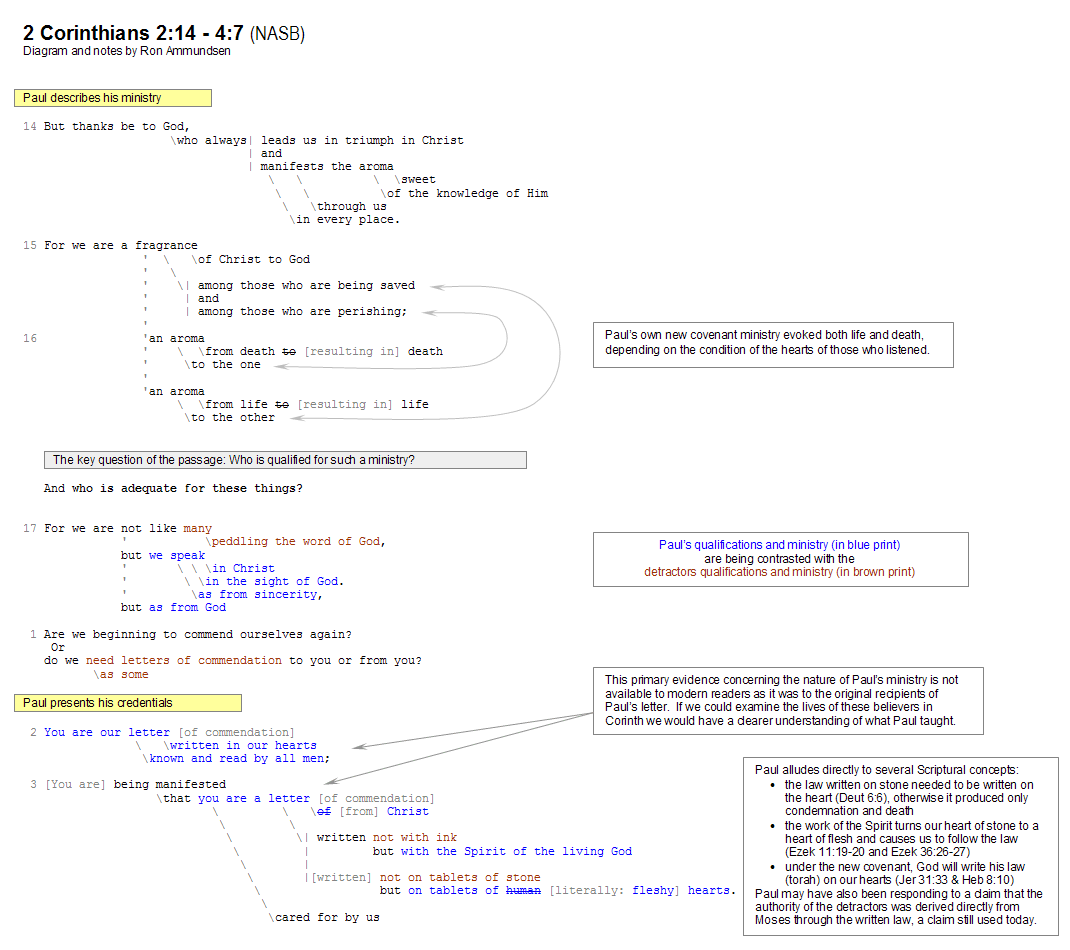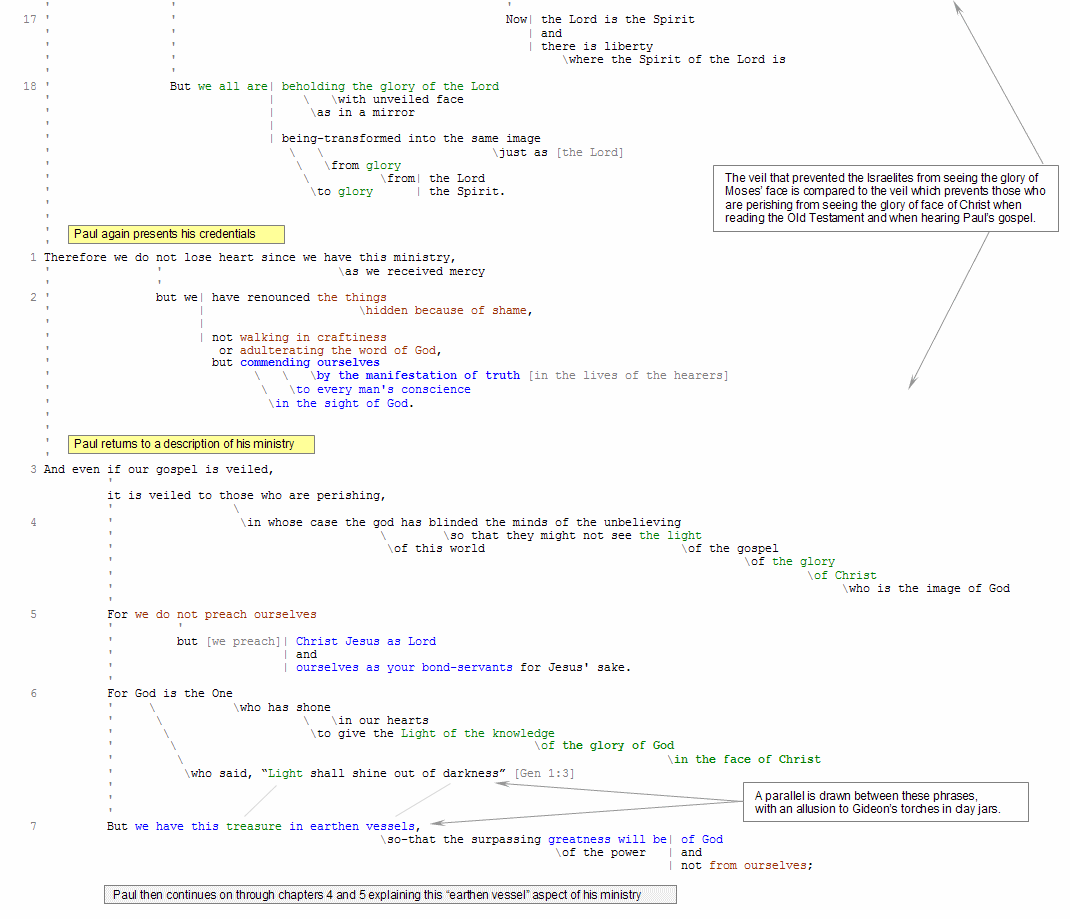Notes:
People sometimes think that Paul is denigrating Torah when he says it is a "ministry of death" but if we look a few verses earlier (2:16) we see that Paul says his own ministry evoked death in those who were perishing. I take that as evidence that Paul wasn't teaching "cheap grace" but was teaching Torah, which has two distinct purposes (or "ministries"). The first purpose is instructing us how to live righteously, which results in life through God's grace. The second purpose of Torah is to serve as the standard by which sinners will be judged and condemned, resulting in their death. Both "ministries" of Torah are good and necessary.
In building a contrast between his ministry and that of his challengers Paul makes several interesting allusions to Old Testament passages as noted on the diagram. Modern Christians who don't know the Old Testament often think of being filled with the Spirit as some nebulous experience unrelated to Torah, but in Paul's day people expected that the indwelling Spirit would result in obedience to Torah: "And I will put my Spirit within you, and cause you to walk in my statutes and be careful to obey my rules." (Ezek 36:27) That's what the Scriptures teach about being Spirit-filled, so when Paul exhorted the Ephesians to, "be filled with the Spirit," they would have understood that Paul was also urging them to obey Torah.
A popular misconception about 2Cor 3 is that the central theme is a contrast between the Spirit-filled New Covenant and the letter-of-the-law old covenant. This concept is built on the misplaced modifier "not of the letter but of the spirit" (3:6) which most people take to modify "new covenant" but which fits the context and structure better when it modifies Paul's qualifications.
In order to emphasize the superiority of a Spirit-filled ministry Paul does a comparison between the temporary nature of the glory in Moses' face when the law was given, and the continuous nature of the glory of Christ's face that accompanied the giving of the Spirit-- glory which is continuously available to believers because Jesus said, "I am with you always, even unto the end of the world" (Matt 28:24)
Paul's discussion of the veil in 3:13-16 is sometimes used to try to deprecate the Old Testament, but we should notice that Paul is saying there is glory in the Torah and Old Testament which is revealed when a person turns to Messiah.
Paul put a dual application in verse 16 by quoting/paraphrasing the experience of Moses in Exodus 34:34 and applying it to the present experience of believers along with verse 17-18.
|





